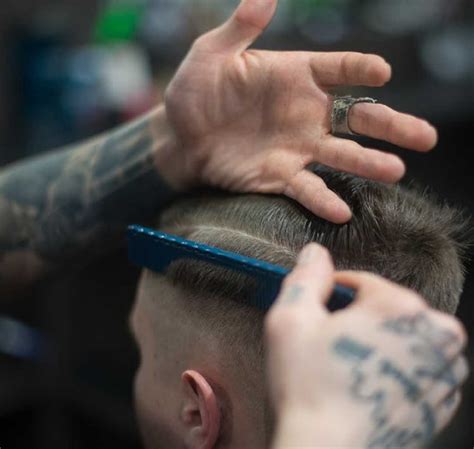Introduction
Hair loss is a common concern affecting millions of people worldwide. While there are several surgical options available, non-surgical hair replacement methods offer a less invasive and often more affordable solution. This article provides a comprehensive overview of non-surgical hair replacement techniques, including their benefits, drawbacks, and considerations.

Types of Non-Surgical Hair Replacement
1. Hairpieces and Wigs
Hairpieces and wigs are the most common forms of non-surgical hair replacement. They are made from natural or synthetic hair and can be custom-designed to match your hair color, texture, and length. Hairpieces are usually smaller than wigs and cover only a specific area of hair loss.
2. Toppers
Toppers are similar to hairpieces but are designed to cover the crown of the head. They are an ideal solution for people experiencing thinning hair in the top area. Toppers can be attached using clips or tape.
3. Hair Extensions
Hair extensions are used to add length and volume to existing hair. They are typically attached to your natural hair using various methods, such as fusion, bonding, or braiding. Hair extensions can be made from natural or synthetic hair.
Benefits of Non-Surgical Hair Replacement
- Less invasive: No surgery is required, minimizing pain, scarring, and recovery time.
- Affordability: Non-surgical methods are often more affordable than surgical procedures.
- Versatility: Hairpieces and toppers can be easily removed and reapplied, allowing for different hairstyles.
- Self-confidence boost: Non-surgical hair replacement can significantly improve self-esteem and confidence.
Drawbacks of Non-Surgical Hair Replacement
- Maintenance: Hairpieces and toppers require regular cleaning, styling, and maintenance.
- Durability: They may not last as long as surgical hair implants.
- Limited options: Not all hair replacement methods are suitable for all types of hair loss.
- Allergic reactions: Some people may experience allergic reactions to the adhesives or materials used in non-surgical techniques.
Considerations for Non-Surgical Hair Replacement
1. Type of hair loss: Different non-surgical methods are more appropriate for specific types of hair loss.
2. Lifestyle: Consider how much time and effort you are willing to invest in maintaining your hair replacement.
3. Budget: Determine how much you can afford to spend on hair replacement.
4. Professional consultation: Seek advice from a licensed hair replacement specialist to discuss your options and choose the best method for your needs.
Effective Strategies for Non-Surgical Hair Replacement
- Choose a reputable provider: Look for a licensed and experienced hair replacement specialist.
- Try different options: Experiment with hairpieces and toppers of different colors, textures, and sizes to find what works best for you.
- Follow maintenance instructions: Adhere to the cleaning and styling guidelines provided by your hair replacement specialist.
- Don’t hesitate to ask for help: If you experience any issues with your hair replacement, don’t hesitate to contact your provider for guidance.
Step-by-Step Approach to Non-Surgical Hair Replacement
- Consultation: Schedule a consultation with a hair replacement specialist to discuss your hair loss concerns and explore your options.
- Selection: Choose the type of non-surgical hair replacement method that best suits your needs.
- Customization: If you opt for a hairpiece or topper, it will be customized to match your hair color, texture, and length.
- Attachment: Your hair replacement will be attached using the appropriate method, such as clips, tape, or bonding.
- Styling: Style your hair replacement to achieve the desired look.
- Maintenance: Follow the maintenance instructions provided by your hair replacement specialist to ensure the longevity of your non-surgical solution.
Tables: Statistical Data on Hair Loss
| Hair Loss Statistics | Source |
|---|---|
| 1 in 4 men experience hair loss by the age of 35 | American Academy of Dermatology Association |
| 50% of women experience hair loss by the age of 50 | National Institute on Aging |
| Hair loss affects over 100 million Americans | International Association of Trichologists |
| Hair Replacement Market Size | Source |
|---|---|
| $12.3 billion in 2021 | Fortune Business Insights |
| Projected to reach $16.7 billion by 2028 | Grand View Research |
| The non-surgical hair replacement segment is growing faster than the surgical segment | Allied Market Research |
Creative Applications: Non-Surgical Hair Replacement for Confidence
Beyond addressing hair loss, non-surgical hair replacement can also be used in creative ways to enhance confidence:
- Stage performances: Hairpieces and toppers can transform an actor’s appearance for a specific role.
- Cosplay and costume parties: They allow individuals to embody different characters and costumes.
- Special occasions: Non-surgical hair replacement can help people feel more confident and glamorous for special events.
Conclusion
Non-surgical hair replacement offers a range of solutions to address hair loss and boost confidence. By choosing the right method, following effective strategies, and maintaining your hair replacement properly, you can achieve a natural and seamless appearance. Remember to consult a licensed hair replacement specialist for personalized advice and support.
